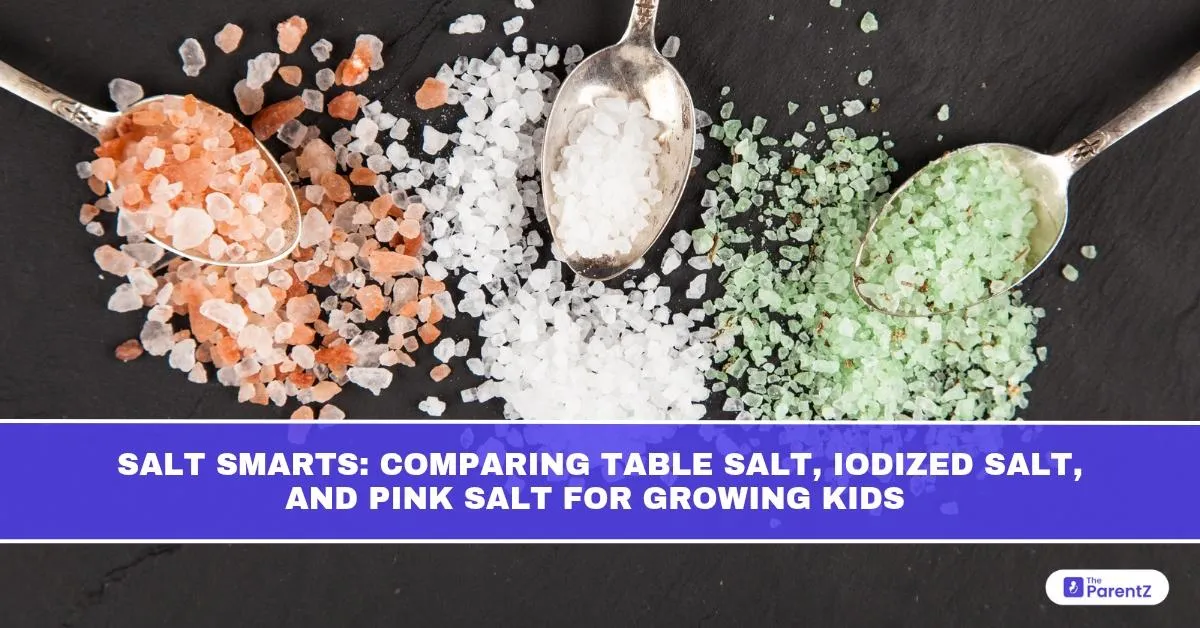Why We Need to Talk About Salt
Salt is everywhere; sprinkled on fruit, added to dal, kneaded into dough, and hidden in snacks. Yet when it comes to children’s health, parents often overlook what kind of salt is being used and how much. While salt is essential for the body, not all salts are nutritionally equal.
In recent years, pink salt has gained popularity as a “healthier” alternative, while iodized salt remains a public health staple. As a dental health professional, I also see how salt affects hydration, mouth health, and taste development in growing kids.
What Does Salt Actually Do?
Salt provides sodium, a mineral that plays several roles in the body:
- Maintains fluid balance
- Supports nerve transmission
- Aids muscle function
- Assists in nutrient absorption
However, excess sodium, especially from processed foods, can contribute to:
- High blood pressure in later life
- Fluid retention
- Imbalance of calcium metabolism
- Increased thirst and dry mouth (seen often in dental exams)
Children need much less salt than adults. The recommended daily sodium intake for children varies by age:
- 1–3 years: ~1.0g (less than 1/2 teaspoon of salt)
- 4–6 years: ~1.2g
- 7–10 years: ~2.0g (Source: National Institute of Nutrition, India & WHO guidelines)
Table Salt: Common But Stripped Down
What it is:
Refined white salt that has been chemically cleaned, bleached, and often anti-caked to prevent clumping.
Nutritional notes:
- Contains high levels of sodium chloride (NaCl), but lacks trace minerals
- Usually not iodized unless specifically labeled
- Often added to processed or packaged foods
For kids:
- Not harmful in small amounts, but contributes to excess sodium intake when combined with chips, biscuits, and fast food
- Provides no iodine unless fortified, risking iodine deficiency over time
Dental view:
Excess salt in snacks leads to increased thirst, resulting in sugary drink intake and reduced saliva—raising cavity risks.
Iodized Salt: A Must for Growing Brains
What it is:
Table salt fortified with iodine, a trace element critical for thyroid function and brain development. Widely promoted by public health programs to prevent iodine deficiency disorders.
Nutritional notes:
- Contains 15–30 ppm of iodine (adequate for daily needs)
- Supports metabolism, mental growth, and hormone regulation
- Especially important in areas with low natural iodine in soil (e.g., parts of India)
For kids:
- Ideal for daily cooking
- Prevents goiter, developmental delays, and learning difficulties
- Recommended by the Indian Academy of Pediatrics for children and pregnant women
Dental view:
Iodine supports overall immunity, which indirectly helps gum and oral health. Deficiency may lead to fatigue and poor appetite, increasing fussy eating in kids.
Pink Salt (Himalayan Salt): Trendy but Not a Magic Cure
What it is:
Rock salt mined from the Himalayan region with a pink hue due to trace minerals like iron, potassium, and magnesium.
Nutritional notes:
- Contains less sodium per gram than refined salt
- May offer small amounts of trace elements, but not enough to fulfill daily needs
- Does not contain iodine unless specifically iodized
For kids:
- Safe in limited use, but not a substitute for iodized salt
- Its “health halo” often leads parents to switch completely, risking iodine deficiency
- Should be used as a supplementary salt, not the primary one in meals
Dental view:
Often used in saline rinses to soothe mouth ulcers, but as a dietary salt, it doesn’t offer significant oral health advantages over iodized salt.
The Hidden Salt Problem: It’s Already in Everything
Many Indian children exceed their daily salt needs not from the pinch added to sabzi but from packaged items like:
- Maggi and instant noodles
- Bakery goods
- Chips and crackers
- Sauces and ketchup
- Cheese spreads
- “Health drinks” that contain sodium-based preservatives
High sodium affects water balance, and in some children, may contribute to headaches, irritability, or poor focus. It also trains the tongue to prefer intense flavours, reducing interest in natural, bland foods like fruits or plain rice.
How to Choose the Right Salt for Your Child
Here’s a quick way to decide:
| Salt Type | Iodine | Best Use | Risks |
| Table Salt | NO | Processed food, pickles | Lacks iodine; contributes to sodium excess |
| Iodized Salt | YES | Daily cooking, main meals | None if used in moderation |
| Pink Salt | NO | Occasional use, salads, seasoning | Can’t replace iodized salt |
Tips to Keep Salt in Check
- Cook with iodized salt, even if using pink salt as garnish
- Limit processed foods, they hide the most salt
- Teach kids to appreciate natural flavors without needing extra salt
- Avoid adding salt to baby or toddler food unnecessarily
- Watch out for “health foods” that are still high in sodium
Final Word: What Matters Most is Balance, Not Branding
“I often see children who have strong taste preferences but weak teeth. Salt, though not sweet, plays a major role in shaping these habits. And choosing the right salt isn’t about trends, it’s about giving the growing body what it needs.”
Let pink salt be your kitchen’s flavour twist, but let iodized salt be your child’s daily foundation. The real health benefit comes not from choosing the fanciest salt, but using the right one in the right amount. As always, less is more when it comes to salt for the body, for the brain, and even for the smile.








Be the first one to comment on this story.